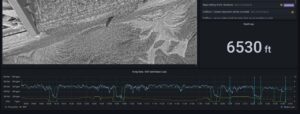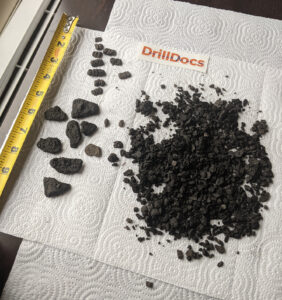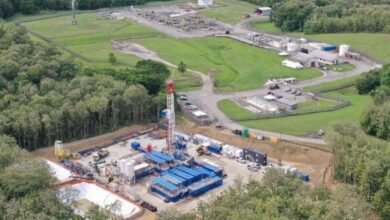Industry may need to look to startups to unlock new potential for tech innovation
Conversations with 2 emerging companies explore how they are navigating the journey from point zero to product commercialization

By Stephen Forrester, Contributor
Much of the innovation in the oil and gas industry has been the result of organizationally driven development. Looking at products and technologies used throughout the industry, inventions have arguably been driven by the service sector. Yet, not all innovation comes from within the service sector, nor from operators themselves. In fact, there is much potential to be unlocked through the startup ecosystem.
Problematically, although the number of startups has risen exponentially in the past decade, many struggle without the resources of larger oilfield service peers or the funding of organizations that are, ironically, also their target customers.
With the industry operating in an increasingly digital world, there is still much work to be done on its interface with the broader startup community, both from an investment perspective and as technology enablers. This article will highlight two startups in the oil and gas space, exploring their applicability to ongoing projects and the challenges and successes they’ve faced in a sector that has traditionally been averse to sweeping change.

Knowing what the problem is, and solving it
The idea for DrillDocs came to its Cofounder and CEO Calvin Holt after his experiences as a drillsite manager with a major operator. “We lost several Marcellus wells due to poor hole cleaning and not detecting wellbore instability before we lost them,” he explained. “We didn’t detect the problem or understand it fast enough, so without the full picture, we made the best decisions we could but failed. The lack of accurate data cost us millions of dollars.”
Mr Holt went to his former colleague Francois Ruel, with whom he had worked on a deepwater dual-gradient drilling project, with an idea for a solution. They believed the problem was big enough to investigate further, leading to the two co-founding DrillDocs together.
“This is cutting-edge drilling technology that we were working with, and I’ve been in this space all my career – taking new technologies and trying to implement them in the field,” Mr Holt noted. “It was natural for me to ask how we could fix this information gap. How could we lose these wells despite having the best rigs, the best engineering and training, and all the models? Conventional best practice wasn’t getting the job done. We have this multibillion-dollar wellbore instability problem and the invisible NPT of poor hole cleaning all combining to increase emissions, and no one had a way to solve it.”
What the company brings to the table is new drilling data that results in a unique way of measuring hole cleaning, which Mr Holt says is the first – and potentially only – solution of its kind.
“We’re taking proven computer vision models and industrial camera technology to the rig and installing it at the shale shaker, with the goal of measuring in real time the volume, size and shape of the cuttings coming out of the hole,” he explained. “We can tell the operator if they are getting enough or not enough out. Using the size and shape data, we can pick up on trends with how the bit is doing, how ROP is doing, and how stable the hole is. In short, we believe operators are either drilling too slow or cleaning holes that can’t be cleaned more.”
Mr Holt noted that there is a knowledge gap with real-time data in this area. When the hole is collapsing, the indication – called a caving – has a unique size and shape, different than a cutting from the bit. “We can pick that up in real time with the right object-detection algorithm,” he continued. “That’s our goal. Then, we can let the team decide how to respond to it. If we had this on those Marcellus wells, we would not have lost them.”
While the computer vision software is critical, the specialized camera, with its deep-learning chip, is at the core of the solution. “We’re one of the first companies to take an explosion-proof camera, embed it with AI, and use it to improve efficiency,” Mr Holt said. “There are a lot of cameras used for security – for things like license plates or face recognition – but we are using it to support drilling and geomechanics teams.”
With Axis Communications as DrillDocs’ technology partner, their AI camera, placed in a Class I, Div. I area, is rugged enough to withstand the harsh environment while delivering the image data necessary to run the computer vision model. The data, however, never needs to leave the rig site, as the camera can process the data when connected to a server in the driller’s console. “We are big proponents of edge computing, as this eliminates issues with data-streaming costs and network reliability while making the operator’s IT department happy,” Mr Holt said. “The camera is kind of the unsung hero.”
The “doc” in DrillDocs refers to “doctor,” highlighting the company’s role in delivering “healthy” wellbores. “I always look at the well as a sort of living thing, from the time it’s created to the time it’s abandoned,” he said. “Our tag line is ‘Drill Faster Without Disaster,’ which is the reality of today’s highly competitive, high-performance market. Drill the fastest hole you can without getting stuck.”
When asked about his journey co-founding a startup, Mr Holt provided some perspective on the process. “We started with an idea, then we had to validate it, and now are ready to commercialize it and, ultimately, scale it,” he said. “Getting started was relatively easily financially, but at some point – especially in oilfield services – you encounter the master service agreement (MSA), insurance and data-sharing issues. Also, you have to decide if you’re going to do patents or not. We did, and that’s expensive and time consuming. Plus, the patent process can take several years.”

Up to this point, the operation has been bootstrapped, with Mr Ruel, who serves as the company’s Chief Technology Officer, doing garage testing by building a mini shaker, installing the camera, and running the software to determine if the idea was feasible. It took about two months before they determined the proof of concept passed. When initial interest from operators validated the idea’s value proposition, they moved into field testing, taking cameras out to several rigs to run the software. Mr Holt’s network within the industry enabled him to approach several mid- to smaller-sized operators who were supportive, but the MSA requirements were too onerous. Fortunately, those operators agreed to have their preferred mud logging supplier act as the main contractor so DrillDocs could get to the rig. Their help proved tremendously beneficial for the startup company, Mr Holt said.
The field proof-of-concept trials were conducted over five months and collected video of over 200,000 ft of drilled footage, confirming the technology. “We established that the shaker cuttings load can be measured using image classification models. We saw it track well with pumps on and off and with ROP,” Mr Holt said.
After retraining the model, they developed CleanSight, which they hope will become standard on every rig in the world. With the first client won for paid trials in the Permian Basin later this year, Mr Holt said he believes strategic partnerships and fundraising are the next logical steps for wider adoption. “I didn’t want to do it at the beginning because our oilfield is a conservative industry, and we had nothing definitely proven yet,” he explained. “But we’re confident and ready now.”
In the case of DrillDocs, fundraising will likely not mean a series of investments leading to an initial public offering, Mr Holt said, but rather that the company would scale with strategic partner support and perhaps one day be acquired.
“Our first preference is to go to a partner-investor familiar with either oil and gas or software solutions that has a good network and can help us scale and have a hands-on approach,” he said. “We’re hopeful that that kind of push is all we’re really going to need.”
Mr Holt also mentioned that companies like Altira, which provides venture capital, and Darcy Partners, who are technology scouts, could be key for DrillDocs and other startups operating in this ecosystem.
The right partnership can prove key to startup success
Scott Wise leveraged his more than 15 years of experience introducing novel technologies in the industrial sector, including with energy companies, when he co-founded Wellbore Matters. While on a golf course in Katy, Texas, it turned out the person with whom he was playing worked for Teradata, a cloud data analytics provider.
He informed Mr Wise that one of Teradata’s inventions, called BitBox, was up for divestment as the company was looking to eliminate physical hardware from its portfolio. Teradata had incubated the technology and done much of the initial work in preparing the marketplace for its introduction, as it was clear that the process of drill bit grading needed a change.
Teradata wanted to sell BitBox to a startup, as the goal was for the bit analysis to be independently provided by an unbiased third party versus owned by an operating company or a drill bit manufacturer. This, Mr Wise said, would eliminate the risk of compromising the integrity of the data or one company obtaining an unfair market advantage. Mr Wise and Wellbore Matters Co-founder John Gibb, an oilfield executive, eventually acquired BitBox. Although this was an acquisition, the company’s ongoing partnership with Teradata is seen as core to the success of the product.
“All of our backend, all of our horsepower in computing, is being delivered by Teradata,” Mr Wise explained. “They wanted to ensure that their two years of work and investment would be going to the right partner who was strategically focused on drilling optimization and equipment reliability, as they wanted to grow drilling as a service and gain traction for their Vantage software.” Teradata Vantage is a connected multi-cloud data platform for enterprise analytics. It unifies data lakes, data warehouses, analytics and new data sources and types.
Through this relationship, Wellbore Matters would be able to grow its business while serving as validation for Teradata’s cloud analytics technology.
BitBox incorporates scanning and vision technology paired with AI and machine-learning algorithms to deliver fully automated and accurate drill bit inspection, grading and analytics to the new standards of the IADC dull bit grading metrics. The physical components are ruggedized for deployment on the rig, and the system is intended for use by anyone.
“We’ve designed this to be absolutely single user, no experience required, from the standpoint of the imaging,” he said. “An operator loads the bit, closes the cabinet, generates a QR code to deploy the service. After this data is uploaded to the cloud, the entire data model and all of the segmentation, measurements and everything else is available to anyone, anywhere in the world.”
The system identifies the drill bit’s primary topology, including the blades, shaft, nose, shoulders, jet nozzles and junk slots before creating a 3D model. Then, via deep-learning capabilities, BitBox identifies each cutter, separated into the cutting structure and substrate, to allow precise wear measurement and detailed examination of cutter failure modes, with accuracy to under 50 microns. Wellbore Matters also differs from competitors in that it has eliminated the use of laser systems.
The process of acquiring and funding BitBox was largely done via the contributions of high-net-worth individuals, rather than via a traditional fundraising process. “We were solicited quite heavily by venture capital. However, given the nature of how we acquired the technology, and the fact that all that investment had been put in by Teradata, as well as a considerable amount of the advanced data modeling, we elected to go private capital initially, until we get to first revenue,” Mr Wise said. “Then, we would look at institutional money, with a focus on using the capital for growth.”
Despite clear industry applicability for the product and an appetite for innovative technologies, Wellbore Matters faced challenges in its early conversations to sell BitBox.
“As a startup, there were two struggles that we had,” Mr Wise explained. “First, we were assuming a hybrid physical-information technology from a software company – as a startup – so our focus was on advancing their prototype to a commercially viable product along with useful organization of the data. Second, people wondered who we were even after acquiring the technology.”
For the next stage of investment, Mr Wise indicated that they are most interested in capital from end users, such as oil companies. “We’d like to partner with a major who will benefit from it and help us take our technology to the next level,” he said. “That’s the kind of strategic partner we’re talking to right now.” DC
Click here to access the new IADC Bit Dull Grading Recommended Practice.




